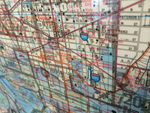Granada might have all the style, but León has all the substance. This historic university city may not be as unblemished and beautiful as its southern rival, but its history of rebellion and political radicalism, coupled with a vibrant and enthusiastic populace, means it wears its wounds with pride and makes for a fascinating place to visit. Those wounds come in the form of bullet-scarred buildings and an ancient abandoned colonial city called León Viejo. Its pride comes in the form of countless churches, museums, and the largest cathedral in Central America, along with narrow cobbled streets that lead to tiny parks and provocative murals. León is very much a city with character and a story to tell. Perhaps that's why León is the birthplace of Nicaragua's greatest hero, the poet Rubén Darío, and is the center of an exciting art scene.
Today, it is the dusty, hot capital of the northwest, but León was once the capital of the nation. It lost its title in 1852, but has been at the forefront of Nicaraguan politics ever since and was a focal point during the Sandinista revolution. The Somoza regime met rebellion with bombings and persecution, and at one stage, torched the central market. A failed uprising in 1978 was the beginning of the end for the dictatorship, and the city was liberated soon after. Every sultry corner seems to have a story. If you are going to take only one guided city tour in Nicaragua, you should do so in León.
León is finally opening up to visitors, with new hotels that can match the best in Granada. It is a city you may intend on just passing through but will doubtless end up lingering in longer than you intended. It also makes a great base for seeing the northwest region of the country. Within striking distance are the dark, sandy strands of Poneloya and Las Peñitas beaches, as well as the wildlife reserve of Isla Juan Venado, which offers a mangrove sanctuary for nesting turtles. Ten smoking volcanoes stand in line like sentries from Lago Managua to the Gulf of Fonseca. They stand over the swelteringly hot lowlands, of which historic León, the thriving agro-city Chinandega, and the coastal port Corinto are the most important towns. Those volcanoes may appear ominous, but they provide rich soil -- making the area an agricultural powerhouse and the most populated part of the country. Nevertheless, this northwest region is poor and still recovering from the catastrophic consequences of Hurricane Mitch, which washed away every bridge north of Managua. If you come to hike the area's many volcanoes, walk or surf its dark Pacific strands, watch turtles nesting, or simply indulge yourself in León, the cradle of the revolution, you will be helping to play an important part in the burgeoning tourism industry here.








